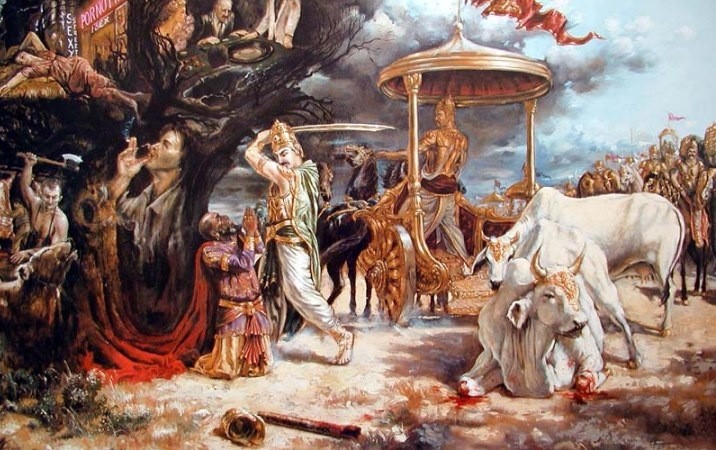
In the grand tapestry of Hindu cosmology, Satya Yuga, also known as Krita Yuga, stands as the first and most revered age. It is the era of truth, purity, and righteousness. Within the four cycles of Yugas - Satya Yuga, Treta Yuga, Dvapara Yuga, and Kali Yuga - Satya Yuga shines as the age of spiritual enlightenment and harmonious existence. Let's delve into the wonders of this golden age and its significance in Hindu mythology and modern times.
1. Introduction to Satya Yuga
The concept of Yugas originates from ancient Hindu scriptures, particularly the Puranas, which describe the cyclical nature of time and human civilization. According to these texts, the four Yugas together form one Mahayuga, and this cycle repeats endlessly.
2. What is Satya Yuga?
Satya Yuga is the first Yuga and marks the beginning of the cosmic cycle. It is an age characterized by truth, virtue, and moral uprightness. People in Satya Yuga lead righteous lives, with a deep understanding of their spiritual nature and connection to the universe.
3. Characteristics of Satya Yuga
Spiritual Enlightenment
During Satya Yuga, spiritual pursuits take precedence over material desires. People actively seek higher knowledge and enlightenment, leading to profound self-realization and unity with the divine.
Universal Harmony
Satya Yuga is marked by harmony and peace prevailing throughout society. People live in perfect harmony with nature and one another, fostering an environment of love and compassion.
Abundance and Prosperity
The age of Satya brings forth prosperity and abundance as people lead virtuous lives, and nature generously provides for all living beings.
4. The Duration of Satya Yuga
Satya Yuga lasts for 1,728,000 years, making it the longest among the four Yugas. As time progresses, each subsequent Yuga sees a decline in human values and virtues.
5. Significance of Satya Yuga in Hindu Mythology
The Story of Lord Rama
The epic Ramayana narrates the story of Lord Rama, an incarnation of Lord Vishnu, who epitomizes virtue and righteousness. His life and teachings exemplify the ideals of Satya Yuga.
The Importance of Dharma
Satya Yuga emphasizes Dharma, the moral and ethical duty of individuals. Following Dharma leads to a righteous and just society.
6. Satya Yuga and Modern Times
Seeking Inner Truth
Even in the present age, the ideals of Satya Yuga hold relevance. People continue to seek inner truth and yearn for a more meaningful and spiritually fulfilling life.
Restoring Balance and Sustainability
In a world facing environmental challenges, the values of Satya Yuga inspire us to live in harmony with nature and work towards restoring ecological balance.
7. Similar Concepts in Other Cultures
Satya Yuga shares similarities with other ancient cultures' beliefs in golden ages characterized by peace, abundance, and spiritual wisdom.
8. Transition to the Next Yuga
As the wheel of time turns, Satya Yuga gradually gives way to the next Yuga, Treta Yuga. With each subsequent Yuga, there is a gradual decline in moral and ethical values. Satya Yuga stands as a beacon of hope, reminding us of the potential for a world built on truth, virtue, and spiritual enlightenment. Embracing the timeless wisdom of Satya Yuga can lead us towards a future of harmony, peace, and abundance.
Timeless Marvels: Discovering the Oldest Temples of India
Sushil Sachdeva: A Trailblazer's Odyssey in Business and Benevolence